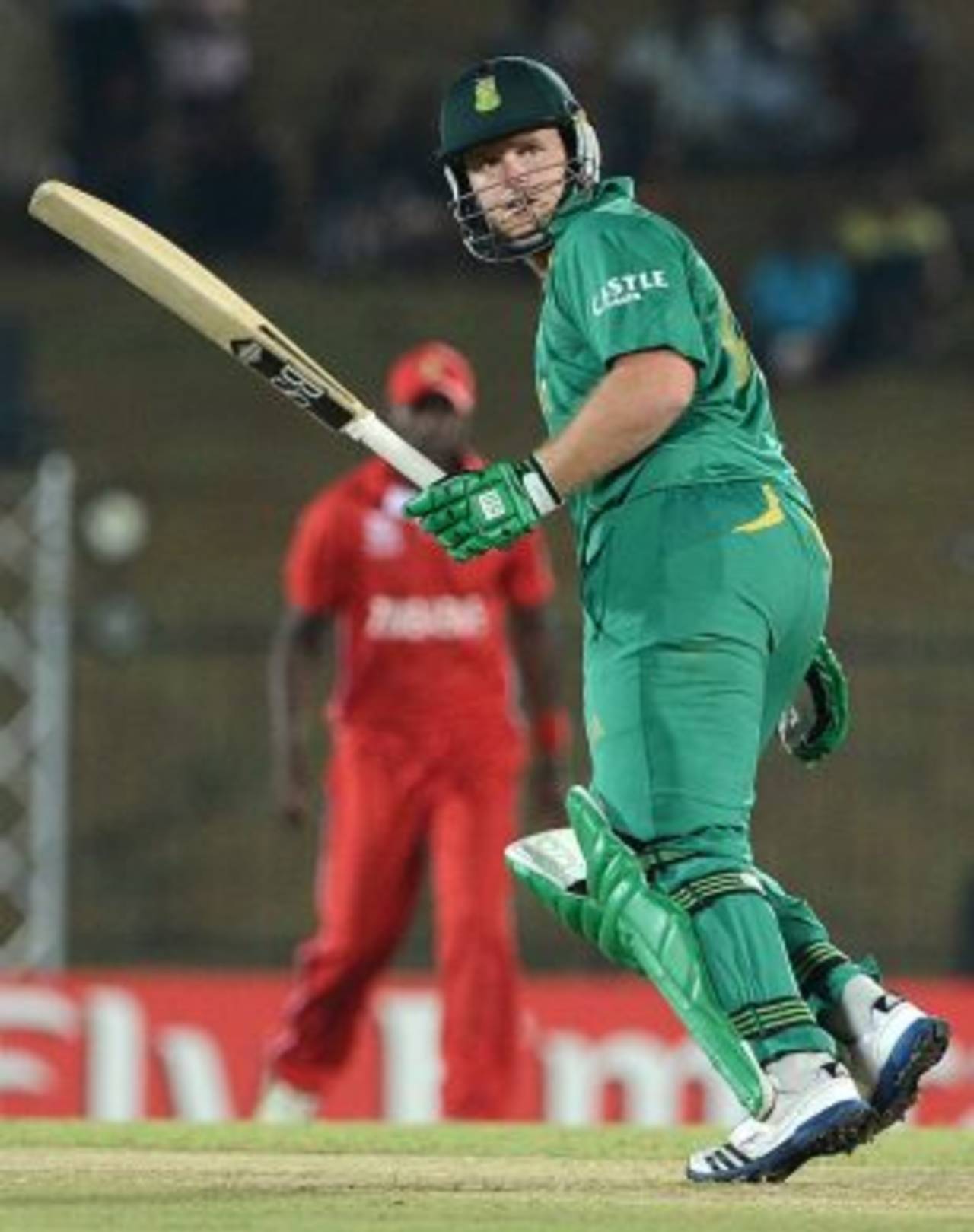Even if their match against India on Tuesday gives them an opportunity to qualify for the semi-finals, South Africa should still conduct a full forensic audit of their performance in the Super Eights so far.
They will find, happily, that pressure has not undone them. The usual big tournament jitters have stayed away but still South Africa have endured two defeats. This time it's poor strategy, puzzling selection and persistent unsettledness which have been their weak points. As a result, they were not able to handle Umar Gul's blitz on Friday and were equally incapable of taming a clinical Shane Watson-led Australia on Sunday.
The gulf between those two methods of being outplayed was so vast that AB de Villiers could not isolate a single area of concern after the loss to Australia. "It's hard to put my finger on it," he said. "We started badly and finished badly as well. So, there is a bit of a bad taste in my mouth at the moment."
In a way, that assessment sums it up perfectly. South Africa's top and bottom are not working as they should and everything in between is suffering because of it.
A glaringly obvious place to start the dissection is the top of the order. Richard Levi's continued failings in the opening berth have to result in a change in that position. The days of riding on the reputation of his century in Hamilton should be over, especially since the only score of substance he has posted since then was a half-century against a half-hearted Zimbabwe.
Levi's technical problem is obvious to even the most junior level bowler. Not only does he struggle to play the ball on the off side but he cannot seem to untie his legs from the spinners' webs. His mandate of aggression from the get-go is never fulfilled because in attempting to show intent, he only shows his stumps.
Faf du Plessis is the only available replacement in the squad for Levi. De Villiers has hinted that Du Plessis may play against India because South Africa "will have to try a few other combinations," but he has not had a great run of form leading in. In hindsight, South Africa may regret leaving out Graeme Smith, their highest run-scorer in T20 cricket, or a player like David Miller, who enjoyed a fruitful stint at Yorkshire during the Friends Life t20.
Even if the Levi issue is solved, South Africa's top three has other problems. Hashim Amla and Jacques Kallis are fine players in their own right but cannot seem to perform together in a T20 line-up. Kallis was due to open the batting - as announced by convenor of selectors Andrew Hudson when the squad was named - which he does at Kolkata Knight Riders.
There, he bats in-between aggressors Gautam Gambhir and Manvinder Bisla, not one batsman who is out of form and one who is trying to cultivate it. Amla has not been able to take his ODI form and replicate it at T20 level, yet. It may be that he just requires more time, like he did in ODIs, but time is not in abundance at a tournament like the WorldT20.
Below that, South Africa's line-up seems to play the lottery. Sometimes JP Duminy goes in at No. 4, sometimes de Villiers, sometimes Albie Morkel (when he plays), sometimes a new-ish player like Farhaan Berhardien. In trying to be unpredictable, South Africa have actually unravelled. The evidence shows that it is not a tactic that works for them.
Conventional thinking is that the best batsman of the side should face the most balls and that would be de Villiers, based on his ability to improvise and make an impact. He denied that it was him. "My T20 record is probably the worst of the top six," he said. He is wrong. De Villiers is South Africa's third highest T20 run-scorer and has a higher strike rate than both Kallis and Amla.
It may not be modern to resort to a fixed line-up, but it would be sensible. Importantly, it would also give everyone an idea of their role, something that neither batsmen nor bowlers appear to have at the moment.
Dale Steyn has opened the bowling as only he can: with pace, swing and venom. Against Australia, Morne Morkel started well too. Robin Peterson who was the go-to man for almost every match of the 2011 World Cup has not been used first-up in the Super Eights. The success of slower bowlers and his ability against right-handers could see him used in that capacity.
The absence of a distinct fifth bowler has also become a problem. Against Pakistan, Kallis and Albie Morkel did the job but were expensive. Wayne Parnell came in cold, having sat on benches for a while, and was disappointingly wayward against Australia. Meanwhile, Lonwabo Tsotsobe, South Africa's second most economical bowler after Johan Botha, has not played at all. Tsotsobe has slipped in the queue and his clever use of variations seems to have been forgotten.
De Villiers is a new captain and is, by his own admission, still learning. What he lacks is something to study from. South Africa cannot be blamed for wanting to try new things because they were often criticised for lacking innovation but in doing so, they seem to have forgotten their foundations. They need to rediscover those. Then if a player like Gul or Watson takes the game away, there really be nothing more South Africa could have done.
Firdose Moonda is ESPNcricinfo's South Africa correspondent
